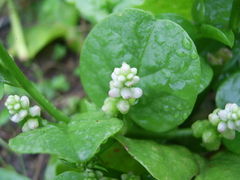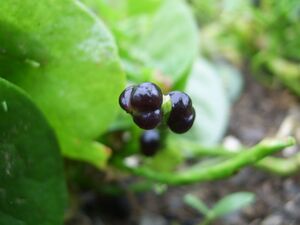Basella alba
| Basella alba {{{status}}} Fossil range: {{{fossil_range}}}
| ||||||||||||||||||||||||||||||||||||||||||||||||||||||||||||||||||
|---|---|---|---|---|---|---|---|---|---|---|---|---|---|---|---|---|---|---|---|---|---|---|---|---|---|---|---|---|---|---|---|---|---|---|---|---|---|---|---|---|---|---|---|---|---|---|---|---|---|---|---|---|---|---|---|---|---|---|---|---|---|---|---|---|---|---|
 | ||||||||||||||||||||||||||||||||||||||||||||||||||||||||||||||||||
| Plant Info | ||||||||||||||||||||||||||||||||||||||||||||||||||||||||||||||||||
| ||||||||||||||||||||||||||||||||||||||||||||||||||||||||||||||||||
| Scientific classification | ||||||||||||||||||||||||||||||||||||||||||||||||||||||||||||||||||
| ||||||||||||||||||||||||||||||||||||||||||||||||||||||||||||||||||
| [[{{{diversity_link}}}|Diversity]] | ||||||||||||||||||||||||||||||||||||||||||||||||||||||||||||||||||
| {{{diversity}}} | ||||||||||||||||||||||||||||||||||||||||||||||||||||||||||||||||||
| Binomial name | ||||||||||||||||||||||||||||||||||||||||||||||||||||||||||||||||||
| Basella alba L. | ||||||||||||||||||||||||||||||||||||||||||||||||||||||||||||||||||
| Trinomial name | ||||||||||||||||||||||||||||||||||||||||||||||||||||||||||||||||||
| {{{trinomial}}} | ||||||||||||||||||||||||||||||||||||||||||||||||||||||||||||||||||
| Type Species | ||||||||||||||||||||||||||||||||||||||||||||||||||||||||||||||||||
| {{{type_species}}} | ||||||||||||||||||||||||||||||||||||||||||||||||||||||||||||||||||
| {{{subdivision_ranks}}} | ||||||||||||||||||||||||||||||||||||||||||||||||||||||||||||||||||
| [[Image:{{{range_map}}}|{{{range_map_width}}}|]] | ||||||||||||||||||||||||||||||||||||||||||||||||||||||||||||||||||
| Synonyms | ||||||||||||||||||||||||||||||||||||||||||||||||||||||||||||||||||
| {{{synonyms}}} |
Basella alba is a perennial vine found in the tropics where it is widely used as a leaf vegetable.
Description
Basella alba is a fast-growing, soft-stemmed vine, reaching 10 m in length. Its thick, semi-succulent, heart-shaped leaves have a mild flavour and mucilaginous texture.
Uses
Food
The vegetable is used in Chinese cuisine. Its many names include flowing water vegetable (潺菜, Mandarin chāncài, Cantonese saan choy, shan tsoi), fallen hollyhock (落葵 Mandarin luokui, Cantonese lor kwai), wood ear vegetable (木耳菜 muercai) and emperor vegetable (帝王菜 diwangcai).
In Africa, the mucilagenous cooked shoots are most commonly used.[1]
Although it is only distantly related to the vegetable spinach, it is commonly known as Malabar-, Ceylon-, Indian-, East-Indian-, Surinam-, Chinese-, or Vietnamese spinach. It is also known as Malabar nightshade or Malabar climbing spinach, broad bologi, mồng tơi and buffalo spinach. Its Bengali names are 'pui saag' and 'bachhali' (Telugu).
Typical of leaf vegetables, it is high in vitamin A, vitamin C, iron, and calcium. It is low in calories by volume, and high in protein per calorie. The succulent mucilage is a particularly rich source of soluble fiber, thought to remove mucus and toxins from the body. The plant is also a rich source of chlorophyll.
Among many other possibilities, Malabar spinach may be used to thicken soups or stir-fried with garlic and chile peppers.

References
External links
- PROTAbase on Basella alba
- Photo and multilingual synonyms
- University of Florida Agricultural Extension
- Evaluation of tropical leaf vegetables in the Virgin Islands
- Malabar Spinach Basella alba, B. ruba (WorldCrops)
- ↑ Grubben, G.J.H. & Denton, O.A. (2004) Plant Resources of Tropical Africa 2. Vegetables. PROTA Foundation, Wageningen; Backhuys, Leiden; CTA, Wageningen.